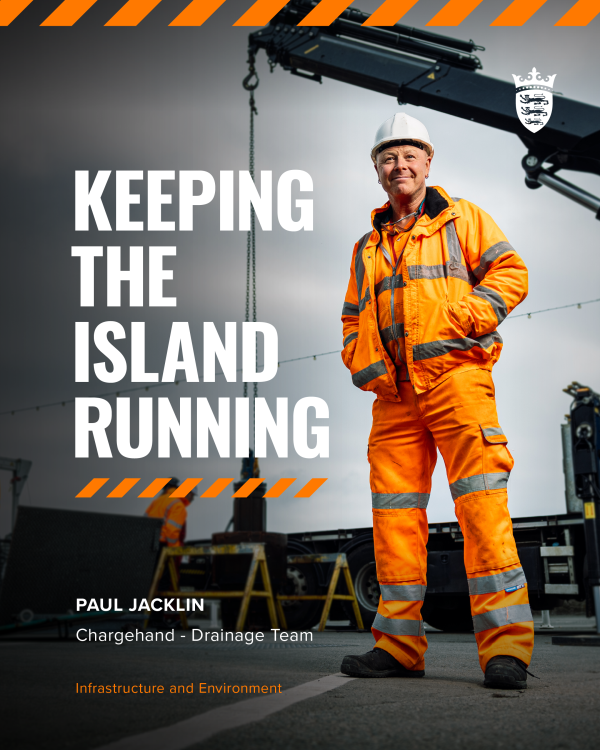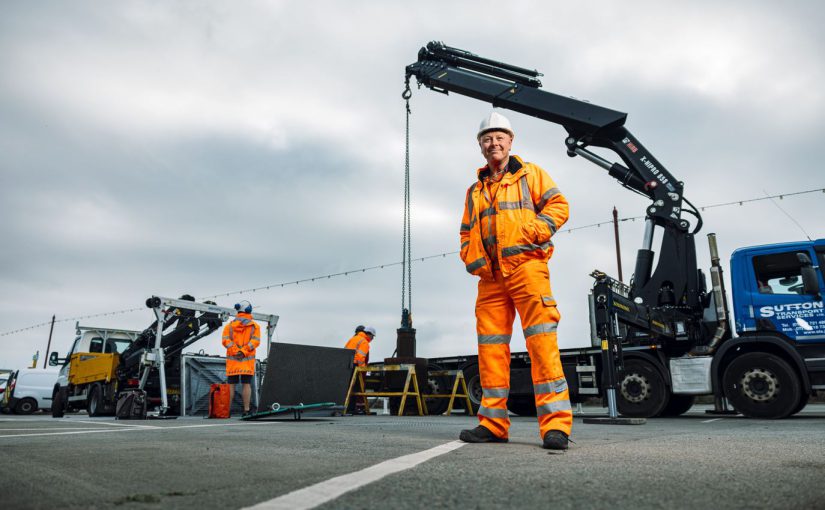Beneath the streets of Jersey, lies an intricate network of drainage pipes and tunnels that are keeping our waste treatment processes running smoothly and our homes safe from floods.
Paul Jacklin started his career as a young worker laying drains, before joining the Infrastructure and Environment Department almost two decades ago. Now a chargehand for the drainage team, Paul and his colleagues are key in maintaining more than 100 pumping stations around the Island and a vast live network that operates silently under our feet 24/7.
Paul explained: “We look after the infrastructure of the Island, including the foul system, surface water waste, and the pumping stations. Any faults that come in, we need to jump on them straight away – such as blockages and that kind of thing.
“At this pumping station here in Bel Royal, when the tide is high and we have heavy rain, the water can’t get out, so the stream runs into the pumping station; the pump then forces the surface water out to sea. It’s a marvellous and brilliant idea, whoever thought of it!”
Storms, rising tides, and floods are becoming an increasing issue globally. With the support of the six tidal surface pumping stations around the Island, Paul and his team are often called out to where they’re needed most, always prioritising homes. “People’s houses have to be a priority for us,” Paul emphasises.
The team’s hands-on, customer-focused approach is part of what makes the drainage team essential to Jersey’s safety.
“I’ve had people crying to me, worried that they’re going to get flooded, but we pull out all the stops to help. I wouldn’t want it to happen to me, so you always try and do everything you can for them, for the public. When you help someone and they appreciate it, that’s great.”
While weather and tides can often be forecasted, much of Paul’s role and one of his biggest challenges is dealing with the unpredictable.
“It’s that phone call, ‘we’ve got a blockage’ which can often escalate into something much bigger.”
While something may appear to be a simple blockage to begin with, this can turn out to be a collapsed pipe, requiring the team to close roads, set up equipment and go underground to make repairs.
Paul adds: “People see another road closed, but we really wouldn’t close the road unless it was important. Of course, we want the roads to be open so the public can keep driving normally, but blockages can be caused by anything, you know infrastructure ages and breaks, things don’t last forever and some of these pipes have been in for hundreds of years – especially a lot of the Town sewers, they all have a life expectancy. So, we go out and do what needs to be done, but often it’s the unforeseen.”
While the team are on the frontline keeping the pipe systems and pumping stations running, there is an action that all Islanders can play in keeping the drainage system functional. Everyday quick-wins such as disposing of fats and oils correctly rather than letting them run down the kitchen sink, ensuring that only toilet paper is flushed down toilets, and removing leaves and debris that catch on drain grates during Branchage or the winter months.
“Many people don’t realise what’s under the ground, they may not have a clue about the mileage of drainage that’s under our roads, or the pumping stations that get the foul water to our main Bellozanne pump. People may not realise that there’s miles of it, absolutely miles of it, and we’re only a small team, so I think we do a good job.”
While Paul and his team may be wearing high visibility protective clothing, a lot of the work they do is not immediately visible to Islanders.
The team serve as a reminder that some of the most vital work in our Island is happening beneath our homes, where every pipe and pump needs to be looked after to keep the Island running.

 blog.gov.je
blog.gov.je